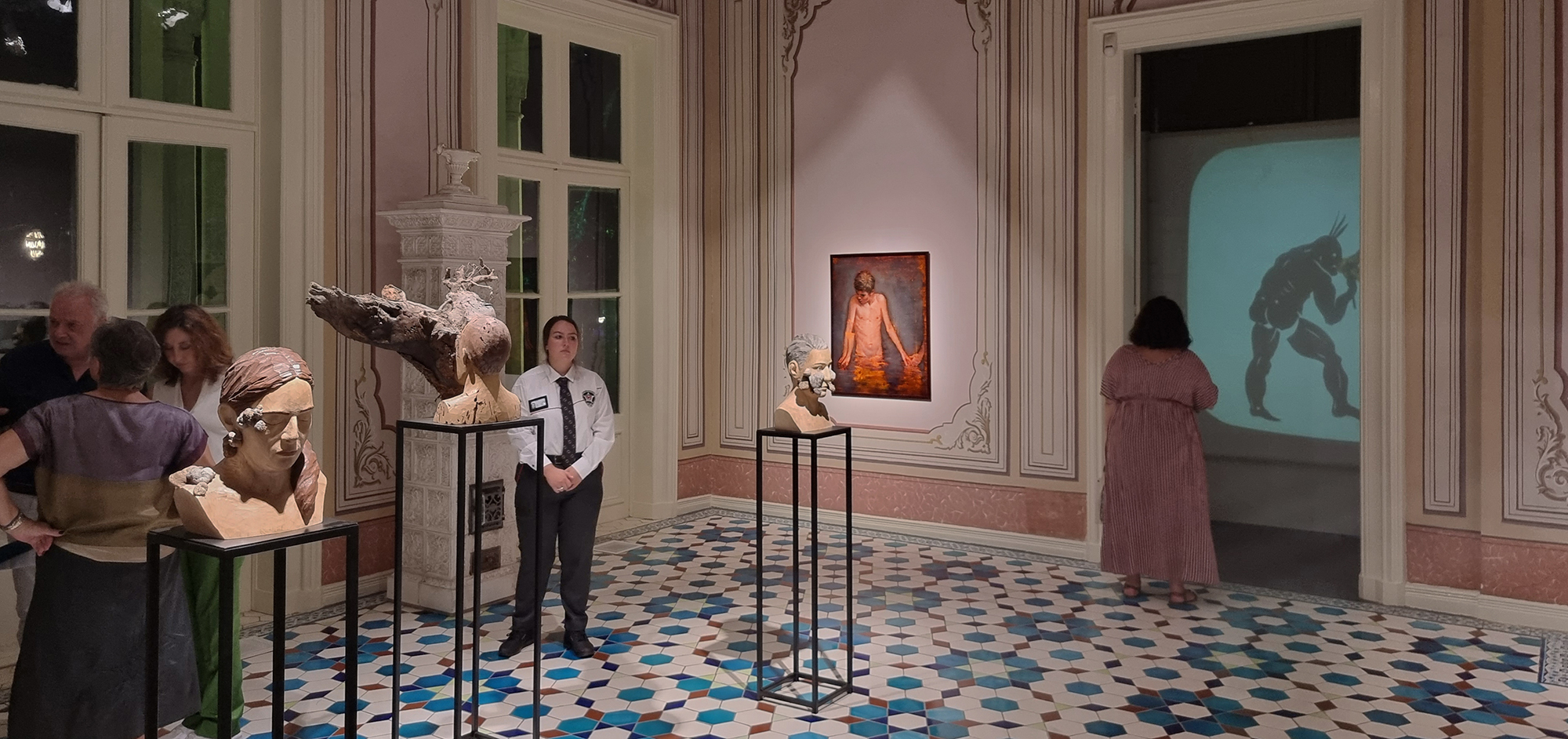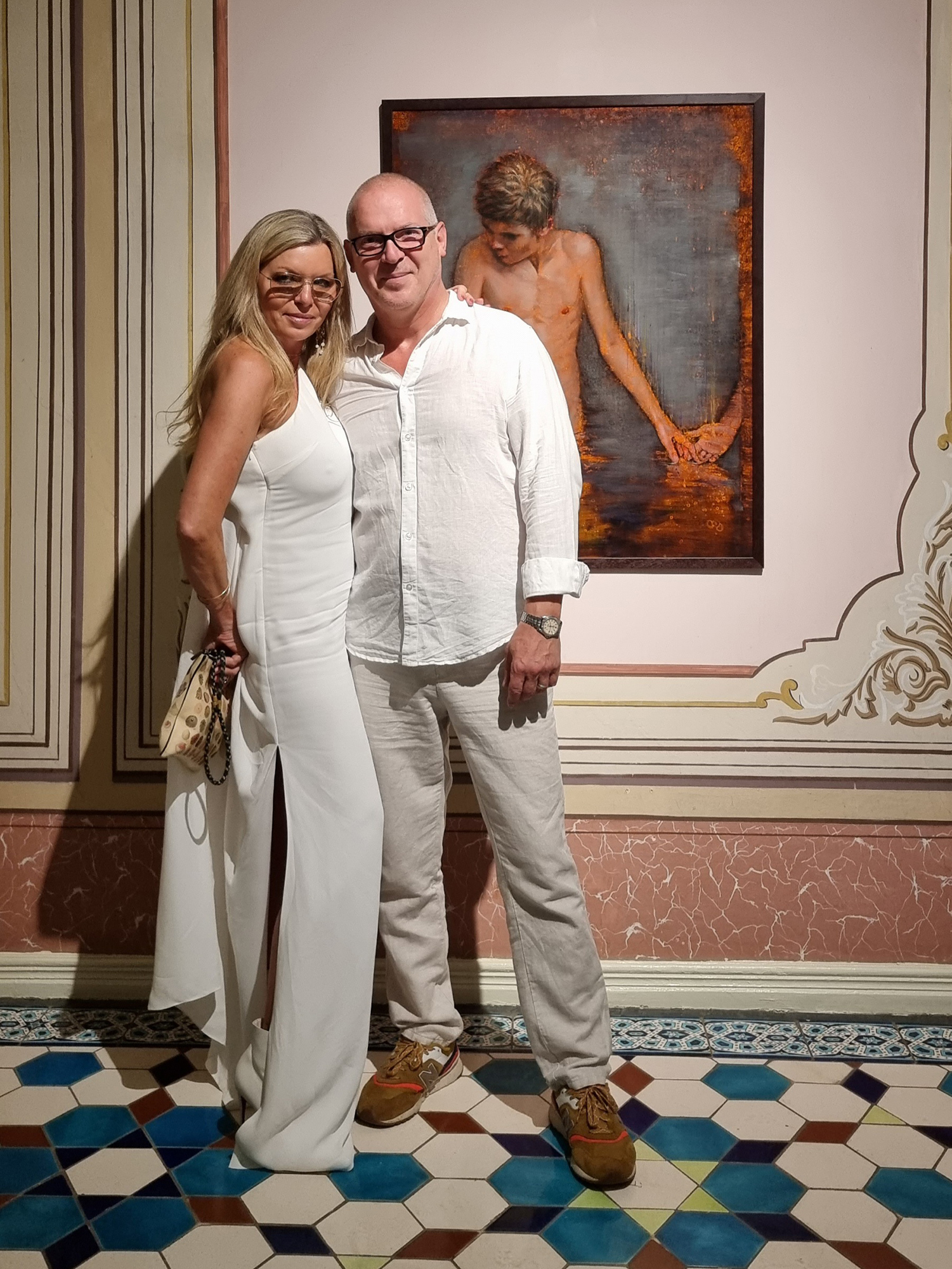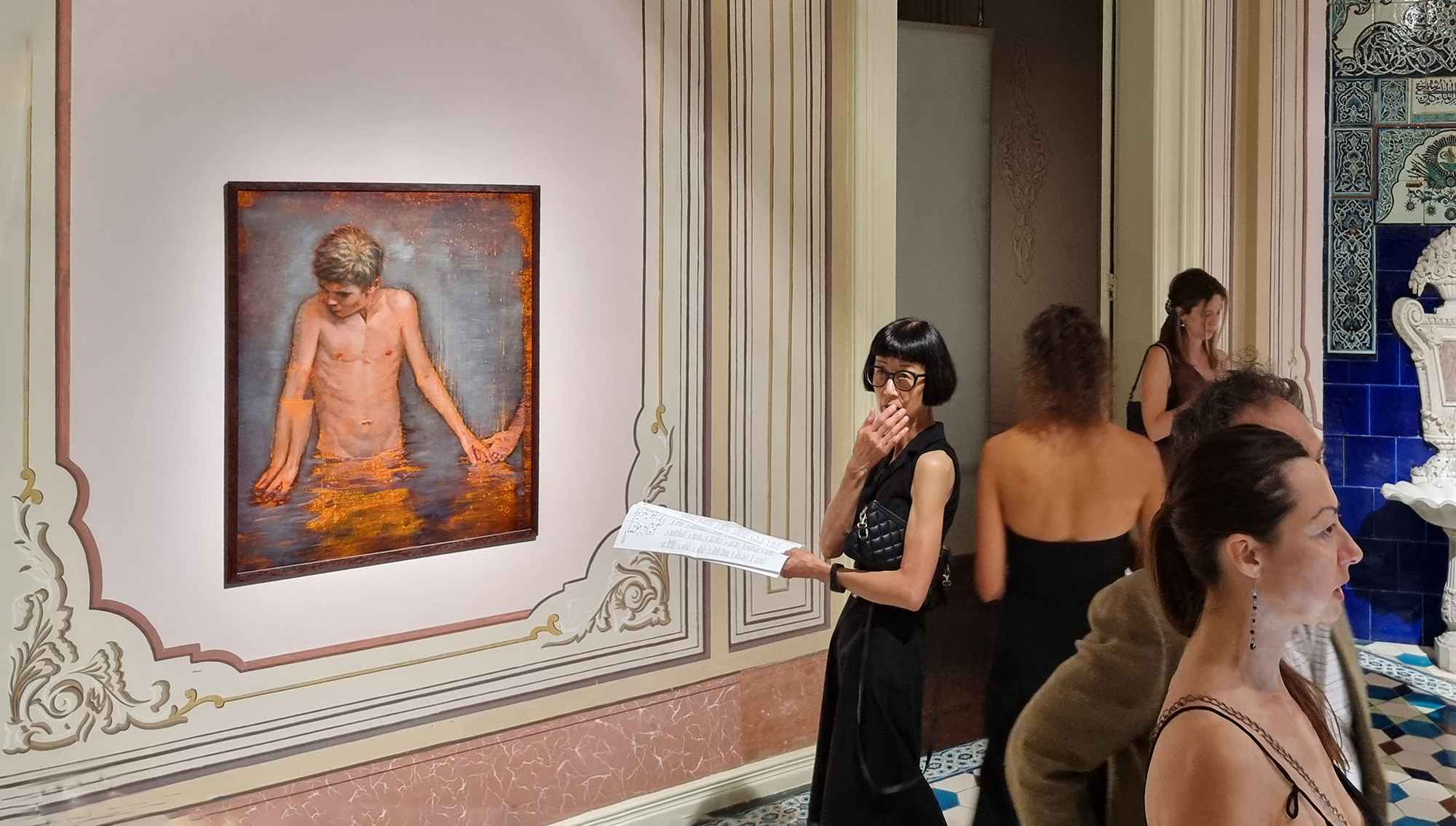YOU KNOW WHO
Ömer Koç Collection
Abdülmecid Efendi Mansion, in Istanbul, between 20 September-11 December 2022.
YOU KNOW WHO CURATORS : SELEN ANSEN & BRIGITTE PITARAKIS
Encouraged by Ömer M. Koç and organised under the auspices of Koç Holding, You Know Who features works from the Ömer Koç Collection along with new productions commissioned for this exhibition with the support of Koç Holding and works loaned from institutions, artists and collectors from Turkey and abroad. Nearly 100 works of various media by more than 45 artists are displayed on the ground and first floors and in the garden of the Mansion. On the base ment floor, an interactive spatial experience provides the visitors with an im mersive sensory journey through the foundational images from Byzantine cosmology and iconography.
Focusing on the fascination and the fear of the unknown, the exhibition takes its cue from the rich Byzantine imagery and literary sources related to the supernatural, the uncanny and the otherworld. Inspired by this historical and cultural heritage , You Know Who puts contemporary artworks into per spective with ancient iconographic and textual sources, tracing the survival , migration and transformation of forms, beliefs and representations throughout history.
In the Byzantine world, the demonic figure stands among the figures em bodying the unknown, providing a historical and cultural paradigm for humanity's representation of the uncanny. It comes to us from afar as a of symbolical value and of varying forms, which mirrors and crystallises a given society's or era's fears and desires. Including the demonic concept and expanding it to neighbouring themes, the exhibition also addresses concepts of monstrosity, hybridity, bestiality, cosmic and social orders and otherness while exploring man - made ways to ward off and put a face on evil .
At a crossroads between fantasy worlds and reality, the here and now and the hereafter, the everyday and the extraordinary , the profane and the sacred, the tangible and the intangible, the exhibition brings together artworks by artists, including artefacts originating in popular culture. Featuring a variety of media, the works on display take the audience on a sensory journey through the realms of the imaginary.
Translated from the vernacular Turkish expression 'ismi lâzım değil' (literally, that whose name is unnecessary to mention), the English title of the exhibition You Know Who, conveys the elusiveness of the unknown, explains nothing, defines nothing: it is a name that does not name yet delivers the unnameable. In Turkish, the expression applies equally to phenomena, beings and things; it is a linguistic ruse, a formula with apotropaic virtues that makes it possible to put a thing /person/ situation deemed harmful at a distance by eclipsing its name. At the same time, it triggers a process of abstraction: when the name of something is not uttered, it loses its contours, its form, its face, its identity, it returns to anonymity, to the state of undifferentiated things, to the formless. On the other hand, silencing the name of things means preventing them from hatching, handing them over to the night, warding off their existence - without making them disappear altogether.
The title You Know Who also provides clues to the modus operandi of this exhibition , which aims to preserve the fragile balance between showing and obscuring, saying and not saying. This journey has been conceived with the conviction that while being deeply cultural, and therefore historical, the evil and the fear mixed with fascination that it engenders have a timeless and universal dimension; that the unknown which impacts our lives relates as much to our human condition as it does to art; that it belongs as much to humanity's past as it does to its future, as much to the origin of forms as to their becoming. Rather than following a linear/chronological path, the exhibition undertakes a trans-historical and multi-disciplinary approach in order to explore the forms, symbols, narratives and practices, which, both the fascination and the fear of the unknown have given birth to throughout history. It operates as a bridge not only between distant temporalities and geographies, but also between different disciplines and aesthetics. In so doing, on the one hand, it stresses the historical and cultural-specific traits of the unknown, and on the other hand, it highlights both the universality and the actuality of our timeless concern and fascination with the foreign, the uncanny, the remote, and the supernatural. Borrowing the circular structure of myths, the exhibition is conceived around motifs and figures that recur-the stone, the snake, the eye-and that come back to the surface by taking on different meanings, hence transcending the antagonistic approach to forms, things and images .
Exhibited artists:
SANTISSIMI, ROXY PAINE, JEAN-LUC PARANT, PATRICIA PICCININI, PETAH COYNE, MEHTAP BAYDU, LITTLEWHITEHEAD, AGUS SUWAGE, ANN VERONICA JANSSENS, ALESCO MOUYSSET, VIVIAN VAN BLERK, KATERINA UNDO, SAM JINKS, MARC QUINN, YASAM SASMAZER, TANER CEYLAN, HERA BÜYÜK TASCIYAN, ATTILA SZÜCS, IREM NALCA, MICHEL NEDJAR, DENIZ BILGIN, MARION VERBOOM, PETER BUGGENHOUT, PINAR YOLACAN, LARRY GIANETTINO, ANTHONY GOICOLEA, GELITIN, CANAN, AHMET DOGU IPEK, MURAT AKAGÜNDÜZ, ANONYMOUS, BERLINDE DE BRUYCKERE, LUCA GIORDANO, GEORGES KIOURTZIAN, LAONIKOS CHALKOKONDYLES, NECLA RÜZGAR, MALENE HARTMANN RASMUSSEN, WENDY MAYER, RUSSELL WRANKLE, TOSUN BAYRAK, EKIN SACLIOGLU, JENNIFER IPEKEL, CAROLEIN SMIT, JEAN LURCAT, HUGO WILSON, JONAS BURGERT MAARTEN VANDEN EYNDE, LI HUI, ANNA GILLESPIE,
EXHIBITION BOOKLET +installation photos PDF
After a sustained period of economic turmoil, Istanbul’s contemporary art scene has achieved a comeback—in no small part thanks to the efforts of billionaire collector and patron Ömer M. Koç. In 2007, Koç Holding committed to sponsoring the Istanbul Biennial through 2026 in addition to partially bankrolling Turkey’s participation in the Venice Biennale. Koc’s $55.7 million contemporary art museum in the city’s Dolapdere district opened in 2016 and today displays pieces from the Vehbi Koç Foundation; the collection holds more than 1,300 works by celebrated Turkish contemporaries including Ayşe Erkmen, Ottoman antiquities, and major international names such as Sigmar Polke and Theaster Gates. Called a “game changer” for Istanbul by Melih Fereli, the museum’s director, the roughly 200,000-square-foot building includes two theaters, a sculpture garden, and programming already planned through 2022 (expect an opera co-commissioned with IKSV in 2021).
Despite the opening of multiple major contemporary art spaces, the specter of censorship continues to hang over art and artists in the largely Islamic country, and exhibitions in Koç’s gallery’s have not escaped protest. At a 2017 show in Koç’s Ottoman Villa, conservative protesters destroyed a Ron Mueck sculpture of a naked man exhibited in a tiled fireplace that they mistakenly perceived as a mihrab, a mosque’s prayer niche. But Koç has remained undeterred. The nonprofit exhibition space Arter, which Koç chairs, opened in 2010 with free admission for visitors under 24. And he has spoken out in favor of speaking up. “Uncensored art is indispensable to real democracies,” he told the New York Times. “Even conceptual art.”
IMAGES FROM THE OPENING:

YASAM SASMAZER, ATTILA SZŰCS
ATTILA SZŰCS

FRU THOLSTRUP, ATTILA SZŰCS
Contemporary East, Sotheby's, London, 2016
